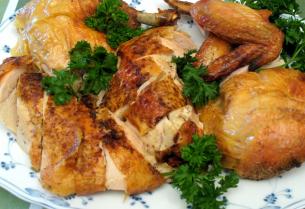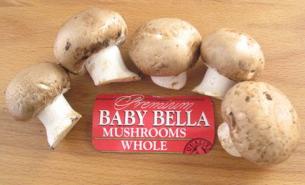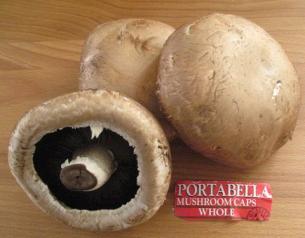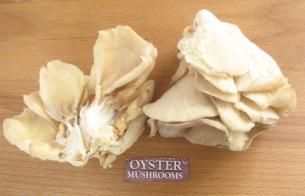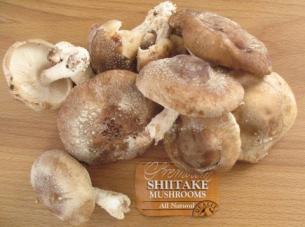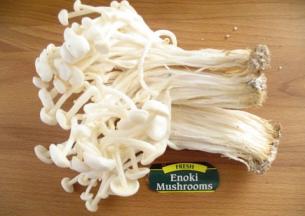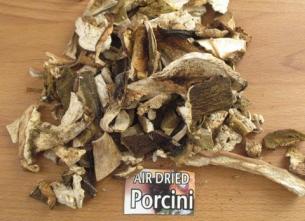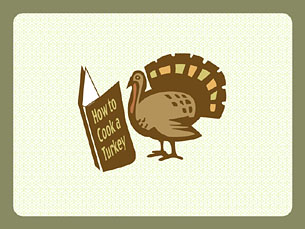
Welcome to startcooking’s ultimate (and updated) guide to cooking a turkey!
The thought of cooking your very first Thanksgiving dinner can be a bit intimidating, but with just a bit of advance planning you can definitely pull it off. Roasting a turkey is very similar to roasting a chicken except your oven temperature should be set at 325 degrees and not 400 degrees. Go have a look at that video of mine before you begin. The USDA’s Fact Sheet on Poultry Preparation is also an excellent resource. It includes information on buying, defrosting, cooking, storing, and an emergency hot-line to call for advice as well!
This post will cover the following 10 questions:
- What kind of turkey should you buy – fresh, frozen, whole, or just the breast?
- What size should I buy?
- What’s that stuff already inside my turkey and do I eat it?
- What kind of pan do I need to cook the turkey and for how long?
- Is making stove-top stuffing cheating or should I stuff the turkey?
- Should I make gravy from scratch or just buy it?
- Now that the turkey is cooked, how do I carve it?
- Is turkey healthy and why am I so tired after eating it?
- Is there a turkey hot-line for emergency questions?
- What kind of side dishes do I need and how about some dessert?
- What do I do with all those turkey leftover?
1. What Kind of Turkey Should You Buy; Fresh, Frozen, Whole, or Just the Breast?
Fresh Turkey
If your guests are coming tomorrow, you will need to buy a fresh (not frozen) turkey. If you have time to plan in advance, you can reserve a fresh turkey ahead of time, from your local butcher shop (if you have one!)
Frozen Turkey
Frozen turkies need time to defrost. The fastest way to defrost a frozen turkey is to put it (in its original packaging) in the sink and let it soak in COLD water. Be sure the turkey is completely covered with water. Change the water every half hour. Allow one hour of thawing time per pound of turkey. If you have the time, typically a couple of days, you can thaw your turkey in your refrigerator. Calculate five hours of thawing time per pound.
Whole or Breast of Turkey
That depends on your own personal tastes. One year, I decided to just buy and cook turkey breasts figuring it would be easier to carve and serve. Everyone asked where the legs were! You can buy whole turkeys that are “self-basting”. They are moist and delicious and I would highly recommend them for the beginning cook.
(Note: Don’t be concerned if your turkey does not come out looking like the ones on the cover of all the food magazines. Photographers sometime use shoe polish to make those turkeys have that beautiful coloring!)
2. What Turkey Size Should I Buy?
Calculate one pound per person. So, for a group of six, a six-pound turkey should suffice. Go for one that’s bigger if you want to have leftovers.
3. What’s that Already Stuffed in my Turkey and Do I Eat It?
When you remove the turkey from its wrapping you will have to reach into the cavity and remove the bag that’s inside before you cook the turkey.
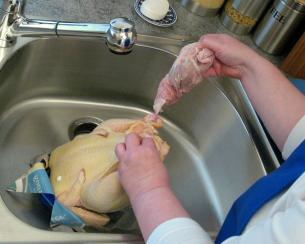
(I show this in my Roasted Chicken video and — yes — there is an “ick” factor here!) The bag usually contains the neck, liver and various edible innards of the turkey. These parts can be simmered in seasoned water on the stove. They are then strained and the flavored water is used as stock to make the gravy. (Pioneer Woman shows how to do this here.) If this is the first turkey you have ever cooked, I am going to recommend tossing this bag away and using store-bought gravy.
4. What Kind of Pan Do I Need to Cook the Turkey and How Long Do I Cook It?
The Pan
A roasting pan with a V-shaped rack is your best bet – but they are expensive. The rack elevates the turkey, allowing the juices and fat to drip into the pan.

A less expensive alternative is to buy a disposable roasting pan from the grocery store.

To give a disposable roasting pan a bit of stability, it is best to place it on a baking sheet with sides.
You can make your own rack by coiling a strip of tin foil.

How long do I cook it?
Read the directions on the package of the turkey and be sure to write down the weight of the turkey. (I even cut out the cooking chart and put it on a plate for reference…just in case!)
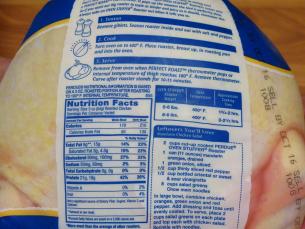
Many turkeys come with a single use thermometer that pops up when the turkey is done. You can also use your own meat thermometer or you can buy a single use pop-up thermometer. (I prefer instant read thermometers) I explain more about thermometers here.

If you are using a regular meat thermometer, insert it about 2.5 inches into the deepest part of the turkey, without touching the bone.
The minimum internal temperature should reach 165°F.
“A whole turkey (and turkey parts) is safe to eat when cooked to a minimum internal temperature of 165°F as measured with a food thermometer. Check the internal temperature in the innermost part of the thigh and wing and the thickest part of the breast. For reasons of personal preference, consumers may choose to cook turkey to higher temperatures.”
Prior to 2006, (as per recommendation of the USDA Food Safety and Inspection Service) most cookbooks recommended that the internal temperature of a turkey should reach 170 degrees F in the breast or 180 degrees F in the thigh. If you cook your turkey that long it will end up dry and tough.
For a good visual to determine if your turkey is cooked, make a slice by the leg joint to see if the juices run clear. The joint should feel loose.
An unstuffed turkey takes less time to cook than a stuffed turkey. Shady Brook Farms has a great site that will help you to determine the cooking time of your turkey. Plus, they have a TURKEY HOTLINE! Call 1-800-810-6325 for all your questions!
5. Is Making Stove-Top Stuffing Cheating or Should I Stuff the Turkey?
Bread stuffing (with gravy) is one of my favorite parts of this meal. Instant stove-top stuffing is surprisingly tasty. This stuffing uses dried bread croutons and you can add chopped celery and onions if you like. (That’s how my mom used to make stuffing!)
Make the stuffing and bake it in the oven (or on the stove top). You do not have to stuff the turkey. In fact the USFDA advises against this method for food-safety reasons. The unstuffed turkey will take less time to cook.
6. Should I make gravy from scratch or just buy it?
As I said above, if this is the first turkey you have ever cooked, I am going to recommend using store-bought gravy. Making gravy is not difficult but it can be tricky for a beginner cook. If you are considering making your own gravy from scratch, start by checking out my post on How to Make Gravy. There are several different ways to go about making gravy. Here are some additional links to really good photo tutorials and videos on making various kinds of gravy:
- This video shows how to make gravy in advance.
- The Mayo Clinic also has an excellent video on Making Healthy Gravy. Their recipe uses cornstarch instead of butter and flour to thicken the gravy.
- Instructables has a great photo-tutorial on a superb looking Vegetarian Mushroom Gravy.
- For lovers of Giblet Gravy, head over to The Pioneer Woman for a very well done photo-tutorial.
- Martha Stewarts Perfect Gravy is made with Madera Wine. She thickens her gravy by making a “slurry” of giblet stock and flour in a jar.
7. Now that the Turkey Is Cooked, How Do I Carve It?
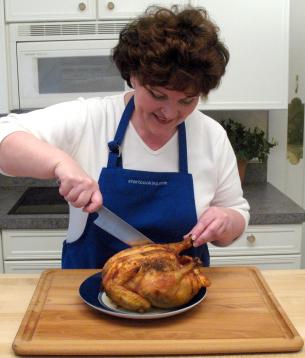
Once the turkey is out of the oven, loosely cover it with tin foil and let it rest at least 20 minutes to 30 minutes. When carving the turkey, make sure you have a sharp knife and be sure to carve it in the kitchen – not at the dinner table. Any spills or mishaps should happen behind closed doors. Garnish the turkey platter with lots of fresh parsley and maybe even some sliced oranges. (By the way, there are about 65,000 videos on Google showing you how to carve a turkey!)
8. Is Turkey Healthy and Why Am I so Tired After Eating It?
Turkey is a great source of protein but the l-tryptophan can make you sleepy. Or maybe it’s just that you worked so hard preparing your first, utterly fantastic, turkey dinner!
9. Is There a Turkey Hot-Line for Emergency Questions?
Of course! And there are real people on the other end of the phoneline!
10. What Kind of Side Dishes Do I Need and What About Dessert?
Startcooking.com has tons of appetizers, side dishes and desserts to choose from. Here are just a few suggestions:
Pumpkin Soup

Cranberry Sauce with Mandarian Oranges

Mashed potatoes
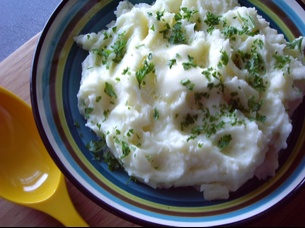
Gravy (from a jar) or Make Your Own Gravy
Sweet Potato Casserole

Butternut squash
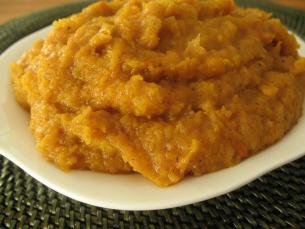
Steamed fresh vegetables
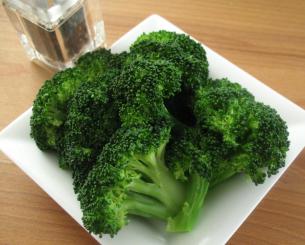
And for dessert how about Pecan Pie!
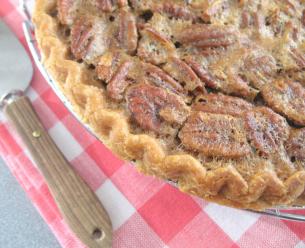
Pumpkin Pie

Chocolate Cheese Cake Pie
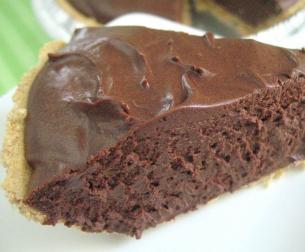
11. What Do I Do with all Those Turkey Leftover?
Cooked turkey can be substituted for any recipe that calls for cooked chicken.
Chicken (or turkey) Salad with Wild Rice and Avocados (video) can get made in the morning and dinner will be ready and waiting when you get home from work (or shopping!).
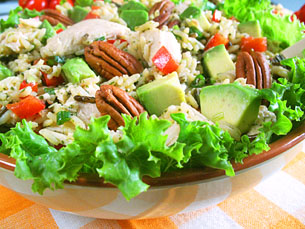
Chicken (or turkey) Noodle Soup is everyone’s favorite. This recipe takes less than 20 minutes to prepare.
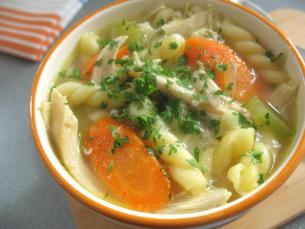
Chicken (or turkey) Salad is great made with walnuts and grapes!
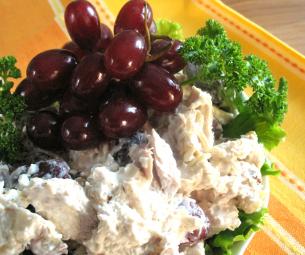
Caesar Salad often has cooked chicken add so why not some cooked turkey!
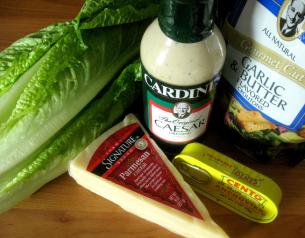
Taste of Home definitely knows what to do with their turkey leftovers. They have a great list of the Top 10 Things to do with Leftover Turkey.
Kate’s Global Kitchen does something really cool called:Turkey 3 Ingredients = Luscious Leftovers
I can’t wait to try this Turkey & Swiss Panini.
Good Luck and Happy Holidays!
